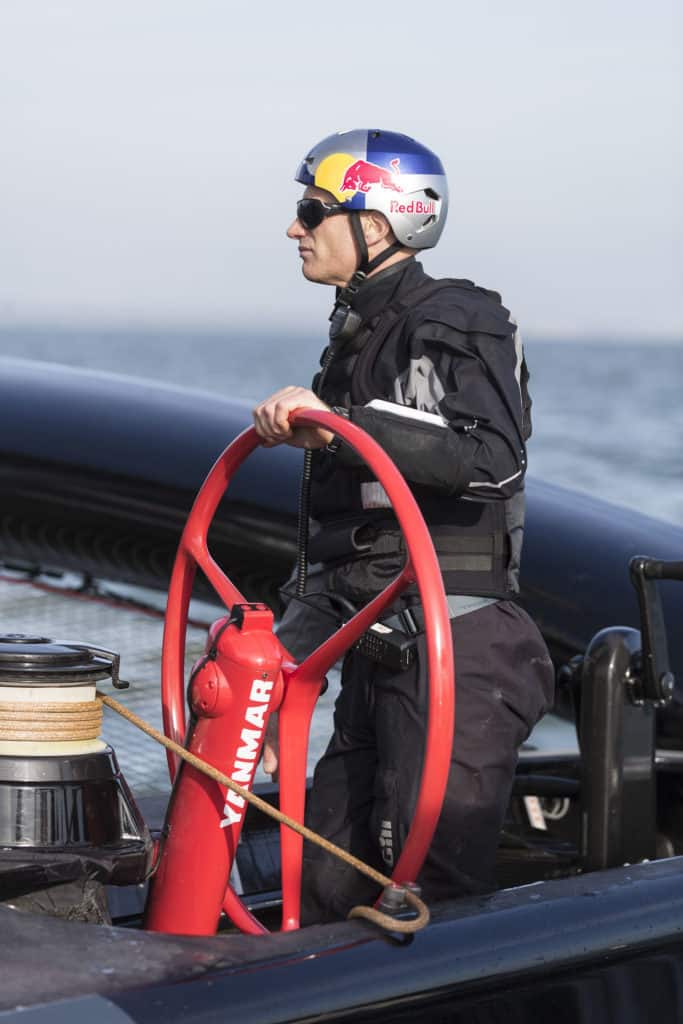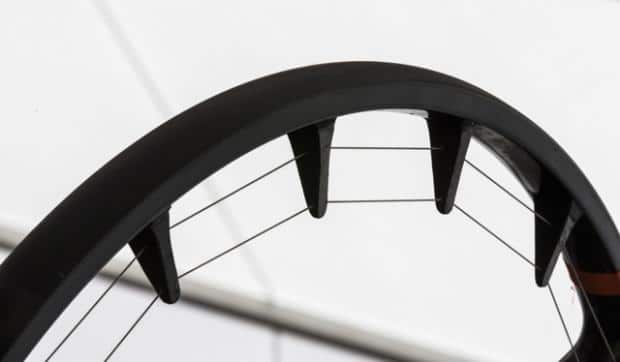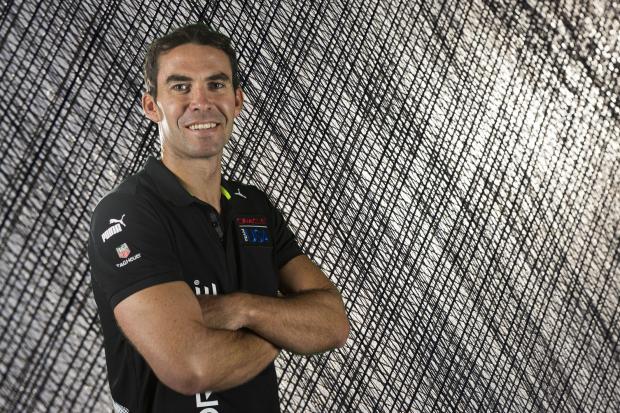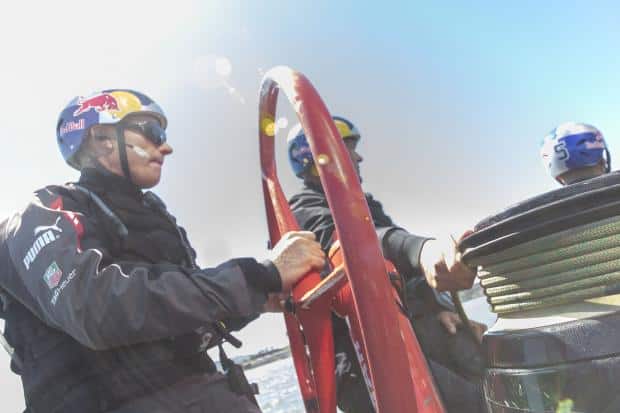
Oracle Team USA Wheel
Much attention has been given to the helmsman’s wheel in this America’s Cup, particularly after foiling became the focus and the need for the helmsman to have control of the daggerboards more apparent. While ETNZ declined to share its wheel secrets, Luna Rossa and Oracle Team USA were happy to share their wheel solutions. Here Aaron Perry, a design engineer at Oracle Team USA, explains the development of his team’s current wheel design. A mechanical engineer from San Diego and in his fifth Cup campaign, Perry’s focus for this event has mostly been the CAD modeling of the yacht platform, collaborating with the sailing team to design onboard systems like the steering, rudders and the wheel design. Working alongside Perry are design team members Dan Smith and Richard Kent who built the wheels, wired the electronics, and were responsible for much of the original button cartridge idea, says Perry.
What are the requirements of the wheel?
AP: We first launched the boat with an entirely different steering system. It was kind of a whipstaff-crossbar linkage, because the helmsman wanted to be able to push and pull on a tiller in effect. They thought that pre-start maneuvering standing while on the center pod was going to be critical. If you look at early images of our boat, it was Jimmy standing on the back of the platform steering the boat off vertical tillers linked to each rudder. We adapted that to a different tiller set up but still tried to maintain that kind of feel for the helmsman.
But then we realized to get enough mechanical advantage and steering range we really had to go to a wheel where we now have adjustable sprockets and can tailor the load to different rudders that we’re using. The second big focus became trim adjustment on the daggerboards for the helmsman while foiling the boat downwind. We think the buttons on the ETNZ wheel and the wires on the Luna Rossa wheel are doing something similar—pitching the daggerboard to trim the wing beneath it while flying.

Above: Luna Rossa’s Wheel
So it’s a real tool for the helmsman?
AP: Yes, in design meetings Jimmy often talks about similarities between flying a plane and sailing these boats, being a pilot versus a helmsman on an AC72. The wheel is acting almost like flap controls on an aeroplane wing in terms of being able to adjust the lift that you’re getting from the daggerboards. He’s actively controlling that while flying the boat with hydraulic pressure supplied by the crew on the handles.
That’s another job to add to the helmsman’s already busy list while he’s driving?
AP: You’re right—it’s pretty hard to pull off when you’re also concerned about sail trim, what the other boat is doing, steering the boat and flying the boat at the same time. But to Jimmy it’s second nature.

Above: Aaron Perry, photo by Guilain Grenier/Oracle Team USA
What are the knob-like protusions around the wheel?
AP: They each hold one button that pitches the board forward and one that pitches it aft, and we have a series of these cartridges around the wheel facing inwards. So depending on where the helmsman is in the rotation of the wheel, they’re easy to get to and he always has one close by. Luna Rossa has tensioned wires around the inside of the rim of the wheel. I believe that being able to pull on either of those two cables may trigger an internal switch to facilitate making adjustments.
What sort of angle change are we talking about that the helmsman is adjusting?
AP: It’s small, less than five degrees. And jibing involves not only pitching the boards but raising and lowering them at just the right time—there’s been a lot of learning. Learning how to maintain consistent lift through a turn has become a focus during practice.
The helmsman is pretty screwed if the connections from those cartridges fail?
AP: We’ve had that happen a few times. We have spare wheels, but any repair costs time on the water. You’ve seen how these boats sail, and there can be water just pouring over the crew, so waterproofing was critical and these small parts had to become removable from the hub so that was a little design challenge in itself—making sure the cable routing into the pedestal and into the boat was totally sealed from water.
The shape of the wheel****—is it designed specifically for each helmsman?
AP: For sure, in fact we have our own mold for the wheel shapes and so make all our own laminates. Boatbuilder Dan Smith and electronics expert Richard Kent are responsible for many of these innovations.
There’ll be no further development on the wheel you have now?
AP: We’re not going to make any changes now.
What do you think the Kiwis may have?
AP: They used to have buttons around their wheel just like what we have. I can only speculate on what they may have going right now. It looks like they may have—which is clever—some sort of pressure-sensitive strip glued to the inside diameter of their wheels. Perhaps it’s proportional so that the harder you push on it, the faster the trim.

Guilain Grenier/Oracle Team USA
What could be the next generation of a wheel design?
AP: Not sure—if ETNZ are doing what I’m speculating, that might be an improvement over what we have. But for us, I think that Jimmy likes to know that when he presses the button, he knows exactly how much adjustment he can expect.
What other things are you working on in these last days?
AP: We’re just doing lots of small things, trying to reduce friction where we can, trying to improve reliability. We’re not testing new equipment but looking at where things could possibly break. It’s still keeping us super busy every hour of the day, weekends … it’ll be like that right up until the first race.









